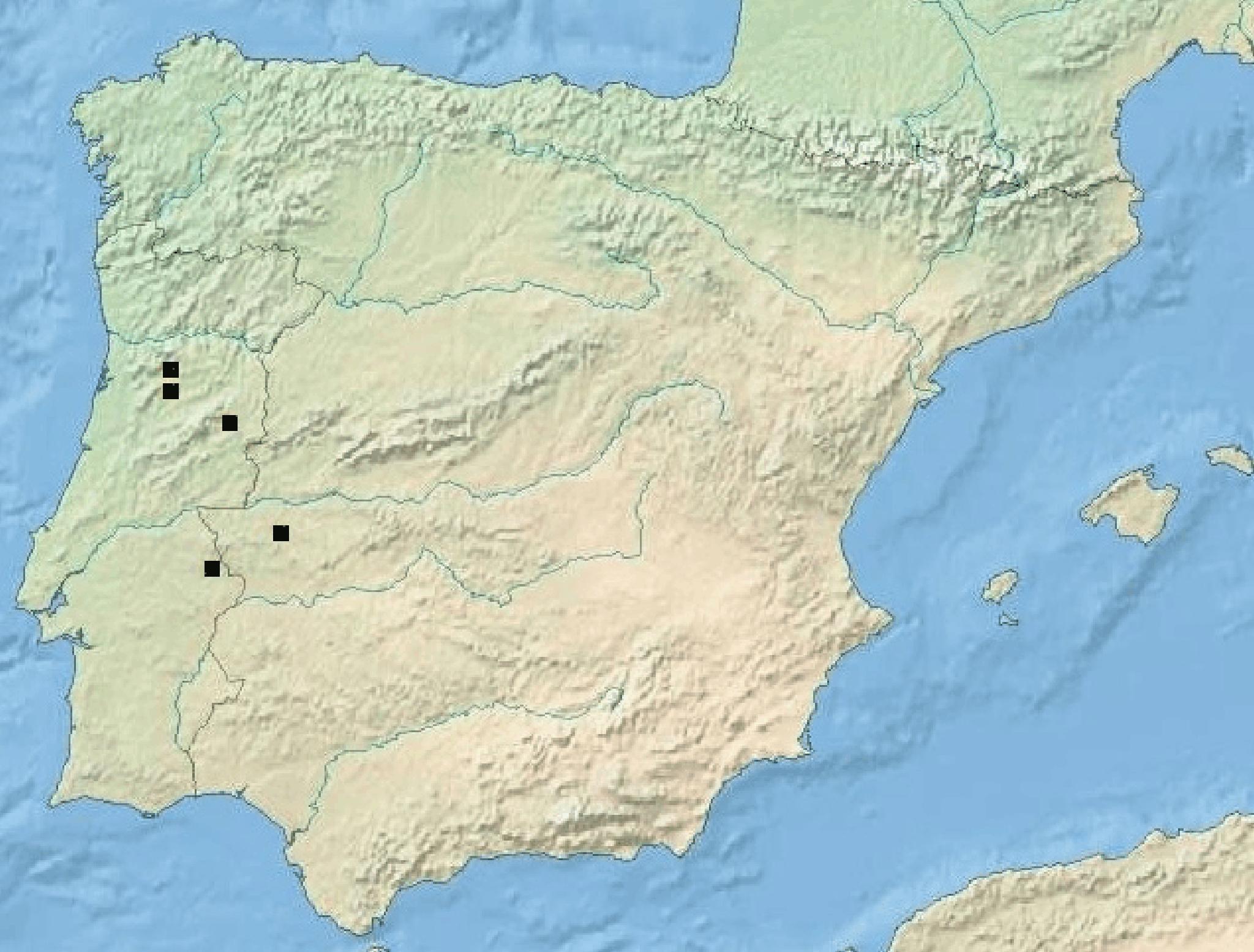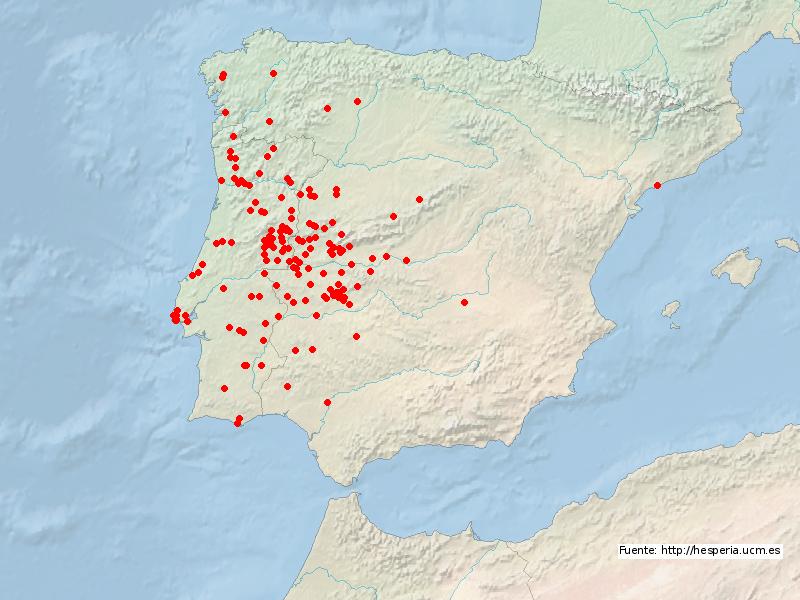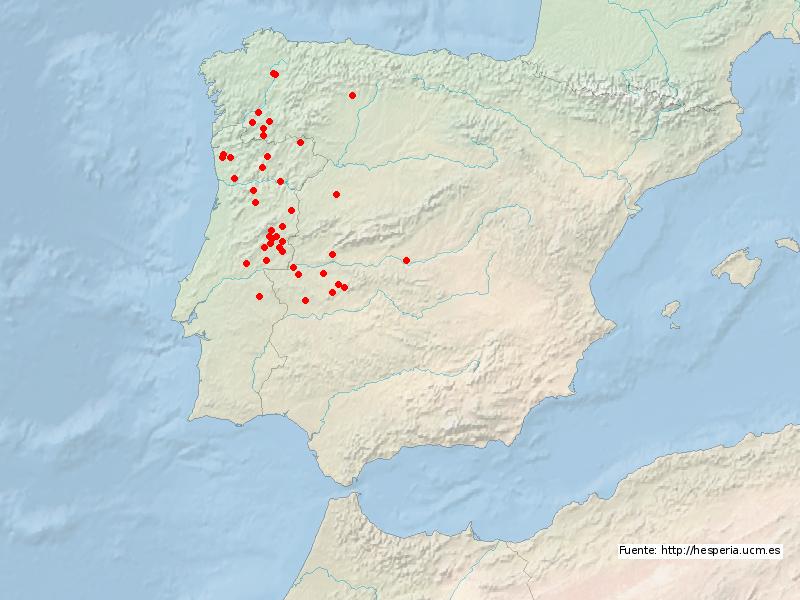Lusitanian
Acces to the Lusitanian inscriptions in the data base
This section includes Lusitanian inscriptions, the study of which has progressed notably in a short time; it could be said that this has been most pronounced in a space of fifteen years, given that we did not have a clear idea of what the linguistic situation of the region was until well into the final quarter of the last century.
THE FIRST STUDIES
In the early period of Palaeohispanic studies, the only two known indigenous inscriptions in Lusitania (Arroyo de la Luz, CC.03.01, and Lamas de Moledo, VIS.01.01) were considered local inventions. Masdeu 1800, 631 suspected that the first of these was a “capricious invention”, and urged anyone who might seek to interpret it to “engage in such useless work”. In the same vein, CIL II, 738 defines that inscription as a corrupt or coarse text in Latin letters (“portentose corrupta an barbara habenda sint Latinis litteris scripta”). Even in cases in which they were taken to be authentic, there was an obvious lack of knowledge about the language in which they were written; thus, for Hübner the Lamas de Moledo inscription was in an unknown language common to this region (“lingua eius regionis propria scripta quam ignoramus”, CIL II 416). In 1935, C. Hernando Balmori devoted a detailed study to this document, which he considered to be written “in a Celtic dialect”.
THE MODERN PERIOD: FROM TOVAR TO UNTERMANN
Only after the discovery of the rock inscription in Cabeço das Fráguas (GUA.01.01), and its study by Tovar in 1985, was it possible to identify distinctive features for the three inscriptions (the verb doenti, the accusatives in –m, possible theonyms in the dative case…), which led to the conclusion that this was an Indo-European language. This conclusion was based not only on purely linguistic arguments, but also on the reference to a ritual practice included in the new inscription which has parallels in the Indo-European world (the so-called suovetaurilia, i.e. the conjoined sacrifice of a pig, a sheep and a bull). Some specific features, among others, the presence of an initial p- (cf. the repeated PORCOM in Lamas and in Cabeço), pointed to the idea that this was not a Celtic language, but this is still a matter of discussion.
This new inscription, “intelligible” due to its syntactic clarity, became the key to establish the very identity of the language and, at the same time, to consolidate its relationship to previous inscriptions, with which it shared lexical and morphological elements (the term PORCOM to refer to ‘pig’, accusatives in –M, the INDI nexus…).
This was the state of affairs encountered by Untermann and reflected in his Monumenta linguarum Hispanicarum, in the IV volume (1997) of which zone L was established for the Lusitanian language.
AFTER UNTERMANN’S MONUMENTA
Since then the number of inscriptions has increased only scarcely, and at a very slow pace. The second inscription in Arroyo de la Luz (CC.03.02), in spite of its brevity and difficulty, documented once again the term CARLAE, which also appeared in the first inscription (CC.03.01), as well as the conjunction INDI. More recently, during the years 2008-2009, two new pieces came to light. The inscription found in the southernmost part, in Arronches (POA.01.01), is the longest and most complete of all those known, and also includes a representation of an animal offering (OILA, TAVRO) devoted to divinities already attested in both other indigenous inscriptions and the Latin epigraphy of the Lusitanian area (REVE, BANDI).
The indigenous inscription most recently found in Lusitanian soil (VIS.02.01) presents some novel features not documented in previous pieces: it contains a clear copulative nexus IGO and a –BOR ending employed to mark dative plural. Like the inscriptions of Arroyo de la Luz (CC.03.01) and Lamas de Moledo (VIS.01.01), it is a bilingual text, in such a manner that Latin is employed for the presentation (and more formal elements, including personal names) and the indigenous language for the main part, including the names of the divinities.
With these antecedents, we establish the following map including the inscriptions mentioned:

You can consult this table with the list of Hesperia references used for Lusitania.
- CC.03 Arroyo de la Luz.
- GUA.01 Cabeço das Fráguas.
- POA.01 Ribeira da Venda, Assunção.
- VIS.01 Lamas de Moledo.
- VIS.02 Viseu.
OTHER HYBRID DOCUMENTS IN LUSITANIA
There are other very brief inscriptions, all of them inserted in votive altars found in a rather Roman environment, which represent a blend of indigenous elements and others of a more properly Latin character.
For instance, the terms Deibabo, found in an inscription of Chaves (AE, 1987, 562 g; HEp, 2, 839; HEp, 7, 1214; Búa 1997, 60; Búa 2000, 396), and Arabo, included in a text of La Vera (AE, 1977, 423; Búa 2000, 526; HEp, 13, 215), show what seems to be the indigenous grammatical inflection (dative pl. in -bo) reserved for the theonym clearly reminiscent of the characteristics of VIS.02.01. Apart from dative plurals in -bo, we have further forms with the dative singular endings -ui / -oi / -oe which are incompatible with the Latin language, and could therefore be considered evidence (or remains) of the indigenous inflectional morphology: e.g. Tongoe in Braga (CIL II, 2419; EE VIII, 115; Elena, Mar & Martins 2008), and Toudadigoe in Mosteiro de Ribeira (CIL II, 2565; IRG IV, 91; Gorrochategui 1987, 87).
This could correspond to a residual or fossilised use of an indigenous language and, in any case, helps us to outline the geographic area in which the Lusitanian language was in use. The geographical dispersion of these pieces, which covers a more extense area than that of the previous map, reaches the limits of the Gallaecia (cf. Vallejo 2013c, and Gorrochategui – Vallejo, forthcoming):

1. Lamas de Moledo (Castro Daire, VIS): cf. BDHesp VIS.01.01. 2. Arroyo de la Luz (CC): cf. BDHesp CC.03.01. 3. Cabeço das Fráguas, Pousafoles do Bispo (Sabugal, GUA): cf. BDHesp GUA.01.01. 4. Arroyo de la Luz (CC): cf. BDHesp CC.03.02. 5. Arronches (Arronches, POA): cf. BDHesp POA.01.01. 6. Viseu (VIS): cf. BDHesp VIS.02.01. 7. Aguas Frias (Chaves, VRE) (AE 1987, 562 g; HEp 2, 839; HEp 7, 1214; Búa 1997, 60): Deibabo Nemucelaicabo. 8. Arroyomolinos de la Vera (CC) (AE 1977, 423; Búa 2000, 526; HEp 13, 215): Arabo Corobelicobo Talusicobo. 9. Bemposta do Campo (Penamacor, CSB) (AE 1967, 133, Búa 2000, 508, HEp 11, 666): Bandi Isibraiegui. 10. Braga (BGA) (CIL II 2419; EE VIII 115; Haley 1986. 239; HEp 1, 666; HEp 5, 966; HEp 7, 1160; HEp 17, 215; Elena, Mar & Martins 2008): Tongoe Nabiagoi. 11. Freixiosa (Mangualde, VIS) (FE 54; AE 1985, 516; AE 1989, 383; AE 1992, 944): Crougae Nilaicui. 12. Freixo de Numão (Vila Nova de Foz Côa, GUA) (Olivares 2002, 48-49; HEp 12, 648): ]P() Reagui. 13. Guiães, Vale de Nogueiras (Vila Real, VRE) (HEp 6, 1079; HEp 9, 763): Reue Marandigui. 14. Idanha-a-Velha (Idanha-a-Nova, CSB) (HEp 4, 1038): V?[---]neabo. 15. Liñarán (Sober, LU) (IRLugo 67): Lugubo Arquienob(o). 16. Lugo (LU) (HEp 11, 313): Lucobo Arousa(ecis). 17. Meda (Meda, GUA) (FE 315): Bandi Vordeaicui. 18. Medelim (Idanha-a-Nova, CSB) (AE 1909, 245; AE 1961, 353): Reue Langanidaeigui. 19. Minhotães (Barcelos, BGA) (HEp 4, 1003): Corougia[i] Vesucoi. 20. Mosteiro de Ribera (Xinzo de Limia, OR) (CIL II 2565; IRG IV 91; HEp 2, 542; HEp 5, 640; HEp 6, 699): Crougiai Toudadigoe. 21. Orjais (Covilha, CSB) (AE 1967, 135; HEp 3, 470; HEp 11, 659): Bandei Brialeacui. 22. Portas (PO) (CIRG II 128; HEp 6, 762; HEp 13, 505): Reo Cosoesoaegoe. 23. Proença-a-Velha (Idanha-a-Nova, CSB) (HEp 17, 237): Deiba. 24. Queiriz (Fomos de Algodres, GUA) (HAE 980; D'Encarnação 1975. 136; Blázquez 962: 53 4; AE 1961 341; HEp 11, 670): Bandi Tatibeaicui. 25. Sinoga, Rábade, Lugo (LU) (Martínez Salazar 1910; AE 1912, 12; IRG II 18): Lucoubu Arquien(obo?).
Both the “canonical” inscriptions (nos. 1 to 6), included in the Hesperia database, and these latter ones, of a more hybrid nature, are written in the Latin alphabet. As regards their chronology, one could say that, in general, they correspond to a later epigraphic culture than that seen in the Iberian, Celtiberian and South Lusitanian world, and which in all likelihood arrived to Lusitania during the Imperial era. In spite of this, the inscriptions of Arronches (POA.01.01) and one of those found in Arroyo (CC.03.03) could present some archaic characteristics pointing rather to a Republican chronology.
ONOMASTICS
Western onomastics also confirm a geographic distribution similar to that reflected by the inscriptions. That is to say, when the settlements with the most frequent exclusive names (including both personal names and theonyms) are put on a map, the resulting area coincides with the dispersion of the indigenous epigraphy. Whether in personal names (cf. Vallejo 2013c):

as in divinity names (cf. Vallejo 2013c):

This Lusitanian area has therefore a linguistic coherence similar to others such as the Celtiberian area, where inscriptions and onomastics also coincide in their geographic distribution.